You can never go wrong with vintage furniture in your house. As people spend more time in their homes, they’re looking for ways to bring a little bit of the past into the present.
If a piece of quality furniture or decor is considered antique, it must be at least 20 to 100 years old, whether it has been repaired or remains in its original state. Vintage or antique furniture, on the other hand, is over 100 years old.
Because of its emphasis on clean, uncluttered lines, the Mid-Century Modern style has seen a surge in popularity. Dealers and homeowners alike are interested in purchasing these things.
Unique old furniture with superior craftsmanship has never been easier to find on the internet. We know where to go for a one-of-a-kind artwork that’s full of character and uniqueness.
Table of Contents
Importance of Antique Maker’s Mark
The term “maker’s mark” is often used interchangeably with “antique trademarking.” They make it possible for producers and artisans to claim credit for the creation of an attractive piece of furniture.
Finding the maker’s mark on an antique piece of furniture may instantly inform a customer whether or not the item they are considering purchasing is worth the price tag.
There are several different popular forms of antique furniture maker’s mark, all of which may assist buyers in determining the worth of objects and sellers in setting the appropriate price for their wares.
For instance, the identifying markings can be in the form of a stamp, tag, or label. Alternatively, they might be shown on a plaque that provides rudimentary information on the item.
It is common for many collectors to do some legwork in order to identify the maker’s mark on the piece. However, the effort is well worth it if it leads to the discovery of a genuine antique from a collection that piques your interest.
It is important to keep in mind that if an offer seems to be too good to be true, you should do more research just to be cautious. Modern collectors recognize the important marks of many furniture makers. Let’s find out more.
Types of Vintage Furniture
According to the time when the furniture was manufactured, there could be slight differences. If you examine the parts carefully, you can determine the independent artisans as well as makers marks. There are the following types classified on the basis of age:
Furniture from the 17th Century
Robert Rhea
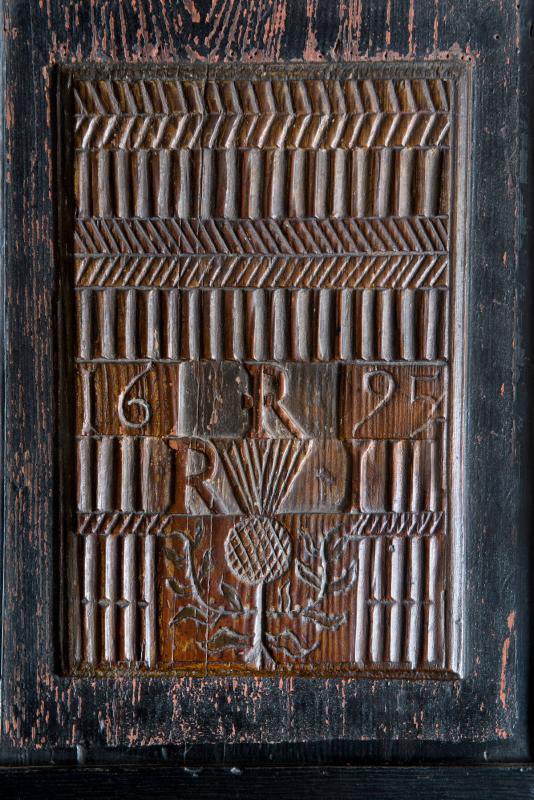
The majority of knowledgeable individuals agree that Robert Rhea, an artisan from New Jersey, was the first person to begin including markings on the antique pieces of furniture he crafted. A joined armchair that he produced in 1695 and conserved has the mark 16 R 95/RI, which is a representation of both him and his wife Janet.
Furniture from the 18th Century
Edward Evans
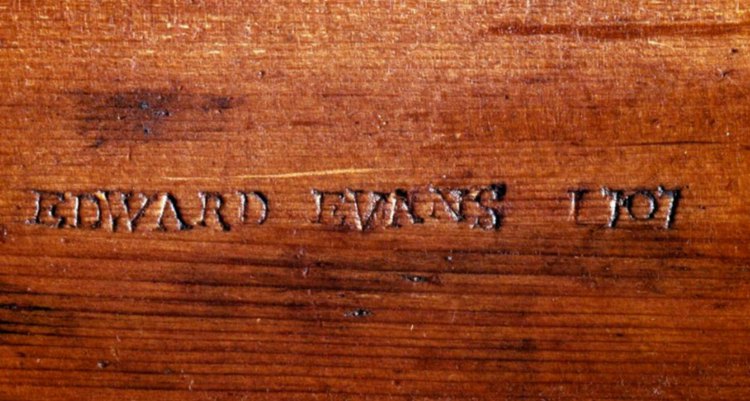
This guy is credited for producing the oldest piece of furniture ever mass-produced in Philadelphia, which is still in existence. He created furniture pieces that were branded with the name “Edward Evans 1707” and sold them to prominent commercial families in that town.
Joel Bailey
In the year 1747, furniture manufacturer Joel Baily affixed his name to the secretary desk that belonged to Queen Anne. It is possible to locate it at the very bottom of the drawer. Around that period, the craftsman reached the age of 15 years old. The Queen Anne furniture is perfect example of english styles and designs.
Edmund Edes
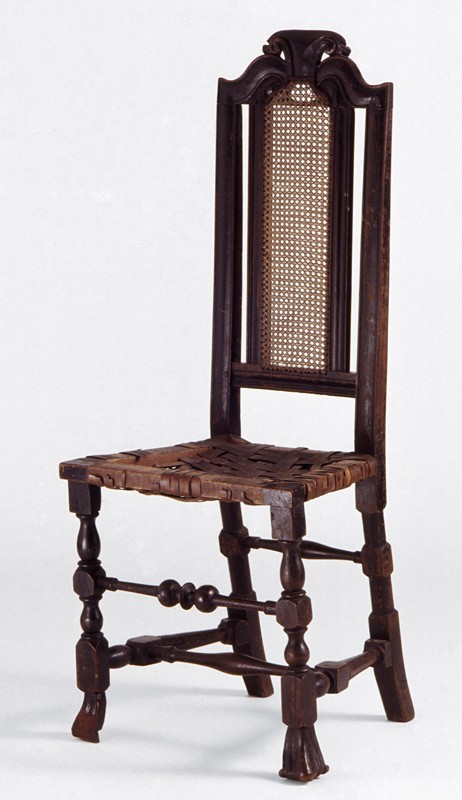
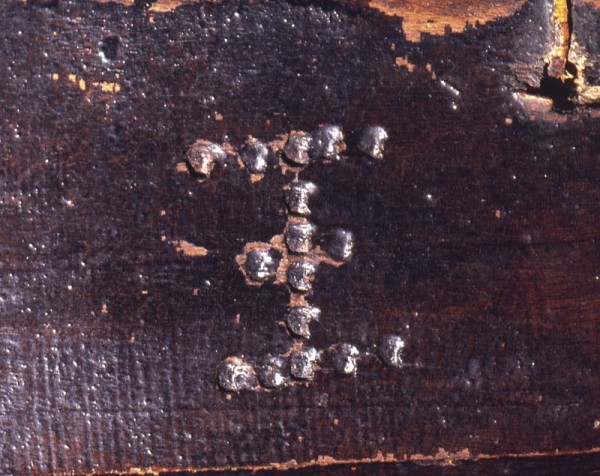
On the caned side chair that he crafted, the furniture craftsman who made it left an intriguing signature that consisted of the letter I and a dash that ran through the middle of it.
Some professionals are of the opinion that Edmund, a craftsman from Boston, was the one who really penned two Es back to back. In the year 1709, he accomplished it for the first first time.
William Savery
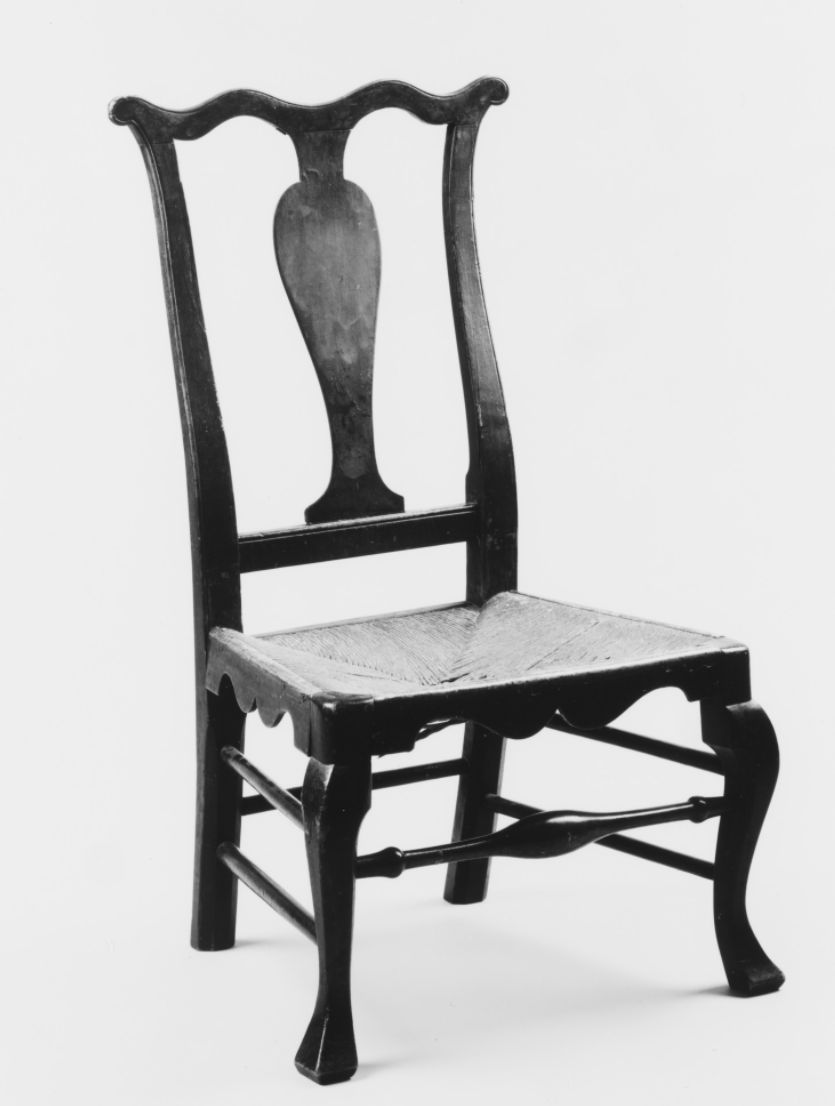
William Savery, a furniture manufacturer based in Philadelphia, was one of the few people to employ paper label at the time.
Unfortunately, not a single one of the six paper labels had a date written on it, despite the fact that it was known that he affixed them to rush bottom chairs and other furniture pieces.
Henry Joseph Cox
Furniture from the 19th Century
John Thomas
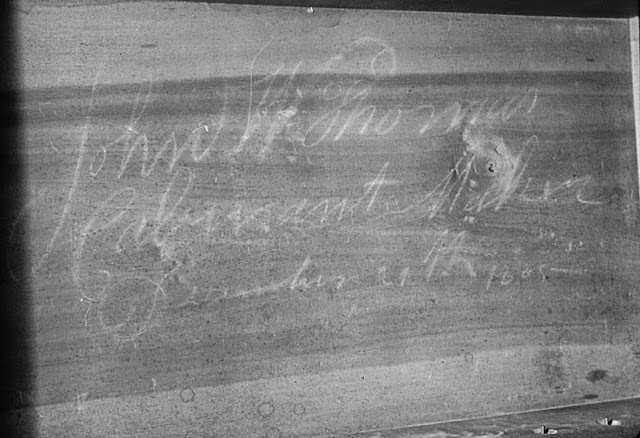
The majority of the autographs that were seen on furniture in the nineteenth century belonged to individual craftsmen who worked independently. One of the enigmatic signs was discovered on a chest-on-frame that was crafted in the state of Pennsylvania.
It was John Thomas who worked as one of the best cabinet makers, and he included the date 27 December 1805 next to his name and occupation on the label. It made the best american antique furniture.
George Gregg
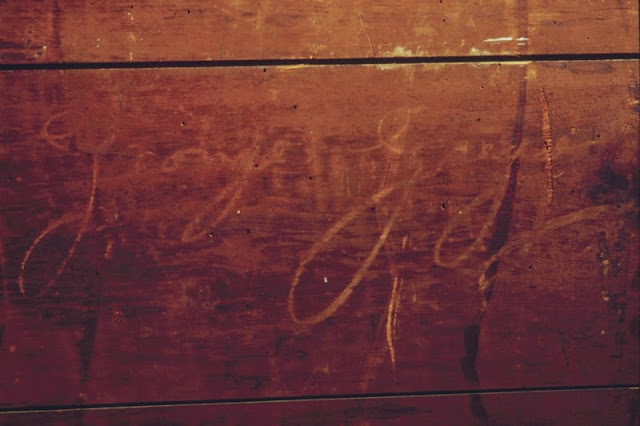
In the top right-hand corner of the backboards that George Gregg made, he wrote an inscription in chalk. Beginning in the late 18th century and continuing until 1819, he worked as a furniture maker, and chalk inscription is his characteristic.
How to Date Vintage Furniture
When shopping for antiques, you should keep an eye out for pieces that have the maker’s marks incised into the antique wooden furniture. You will not only be able to determine the year in which the antique item was manufactured, but you will also be able to better assess the precise worth of the antique.
A person who is new to the antique furniture market may find the issue of recognizing the maker’s markings on furniture to be baffling and intimidating. When you uncover a furniture mark, it might be a mystery, and sometimes the hunt is just as perplexing.
- One of the most common ways to identify an item is by its serial number.
- Only the shadow of long-dead paper labels or painted-over metal tags may be found.
- Labels and burnt-in markings are often seen on the inside or underside of drawers.
- The label was often put on the back of furniture, where it wouldn’t ruin the finish, by certain furniture maker.
- Maker’s marks in the form of metal tags may be added to furniture’s bottom edges, particularly on the side or back borders.
List of antique furniture makers marks
If you discover an antique furniture makers marks on a piece of furniture, consult the Dictionary of Furniture Makers in England from 1660 to 1840 as an additional resource. You should also keep other small diameter components in view. Here’s a list of antique furniture makers marks.
Gillows Of Lancaster And London
Gillow stamped much of the furniture they produced.
| Dates | Stamp |
|---|---|
| 1770–1780 | Gillow and Taylor |
| 1780–c.1850 | “Gillows Lancaster” |
| c.1850–c.1870 | “Gillow” |
| c.1870–c.1890 | L, followed by a reference number then, “Gillows Lancaster” |
| c.1890–c.1903 | “Gillow & Co” |
| 1903 onwards | “Waring & Gillow” on thin brass plaque |

This is one of the well-known furniture makers and cabinet makers which affixed a Gillows. Lancaster stamp to the underside of the piece of furniture or the inside of the drawers. It is interesting to note that next to the antique furniture makers marks, you will often discover a list of helpers who assisted in the production of the antique object in question. This belonged to the victorian times with an excellent varnish finish.
Ramsey And Co.
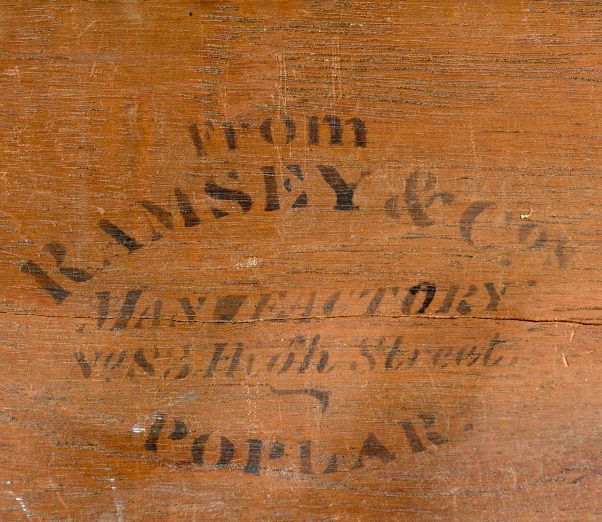
This company produced a large number of canterburys in the nineteenth century, each of which had a drawer bottom for holding sheet music as well as a handle for portability. Their clever stamps had makers marks that read, “From RAMSEY & CO. MANUFACTORY No. 83, High Street POPLAR,” which was both rare and intricate for the time period in question.
Sheraton Furniture
In the latter half of the 18th century, Sheraton furniture was manufactured by a great number of different enterprises. They left their labels on each item, which often featured the name of the former owner or the manufacturer’s logo along with the location of the item.
Because they were printed on paper, the labels have often been damaged over time.
Identifying Antique Furniture Screw for Age
Take some time to inspect the screws that are either securing the hardware to the furniture or keeping the furniture itself together.
Is there a gap in the middle of the slot on the top of the screw?
Is there a gap between the washer and the head of the screw?
Do all of the screws in a piece have the same size and shape?
According to an article published in the Journal of Antiques, the construction of screws might provide a number of hints that hint at dates:
18th Century and Before
Before the beginning of the nineteenth century, the vast majority of screws were manufactured by hand. Variations in the size and form of the screws used in a piece of furniture may be attributed to the fact that the screws were handcrafted.
The screws will not be consistent. Their heads will be off center, and the slots on their heads will be off center.
19th Century
In the early nineteenth century, screws were manufactured in part by machine up to approximately the year 1846. The thread pattern on these screws will be more consistent, but there is still a possibility that the heads and slots may not be centered.
In the middle of the 19th century, machine-made screws were often utilized by those who created furniture. However, these screws did not have a slot in them.
The slot had to be cut by the furniture manufacturer using a hacksaw, and it was often positioned off center. The rest of the screw-in screws from this period is consistent. However, the arrangement of the slots will vary from one screw to the next.
1856 and later
The year 1856 marks the beginning of the production of the first screws that were created entirely by machine. Soon after its introduction, fully machine-made screws became the industry standard.
As a result, the majority of American antique furniture produced after the late 19th century has screws that are of a consistent size and shape.
Identifying Antique Furniture Nail Construction for Age
The structure of nails has also undergone significant change throughout time. Examine each nail in your item very carefully if it has nails or nail-like components.
How consistent is the size across the board?
Are they square or circular in shape?
You can determine the age of your antique furniture makers and hardware by looking at the qualities of the nail. The Journal of Antiques reports that during the course of history, there has been a significant shift in both the design of nails and their manufacture.
Before the year 1790
Before the year 1790, nails were created by hand, which means a blacksmith twisted the nail and then added a “rose head” by flattening the top of the nail with a hammer. Before this time, nails were made of iron.
An antique piece of furniture may often be dated to before 1790 if it has nails that were hand-forged.
The years 1790 to 1890
1790 to 1890 was a time period during which devices that used die similar to cookie cutters to stamp nails from sheets of iron were in use.
Because the die passed through the nail, the top two sides of the nail have a small rounding to them, while the bottom two edges have minor ridges or burrs on them. Wrought iron was used up to the year 1885 to produce nails.
1885 and later
Nails first started being produced out of steel rather than wrought iron in the year 1885. Almost immediately, the steel structure made it possible to draw nails instead of having them stamped by a machine, and by 1890, this method had become the industry standard.
Identify Antique Furniture with Keyholes for Age
Locks and keyholes are common features seen in antique furniture. You’ll notice them on antique desks and dressers in particular. The structure of the lock and the keyhole plate might help you determine an approximate date and the maker of American furniture styles.
Older keyholes might be identified by telltale signs of hand filing, such as rough edges or an absence of exact symmetry. You may also utilize the date hints that are shown below.
- Brass was the material of choice for the solid construction of key escutcheons from the middle of the 18th century until the middle of the nineteenth century. They were often recessed into the top of the wooden surface.
- Wood keyholes were quite common from the middle to the latter half of the 19th century. You could find them affixed to pieces of very early furniture with glue or embedded into the top of the wood.
- After the nineteenth century, metal keyhole plates that had been machine-stamped were more popular, and a wide variety of ornamental designs were available.
Identify Antique Furniture with Drawer Pulls
The structure and design of antique drawer pulls might provide information about the time period in which the hardware was manufactured. The creation of drawer pulls passed through a number of clearly defined stages throughout the course of their history.
These might be helpful when trying to date the handles on old handmade furniture. Examine the pull’s surface, thinking about both the material it’s composed of and the design it has.
Late in the 17th Century
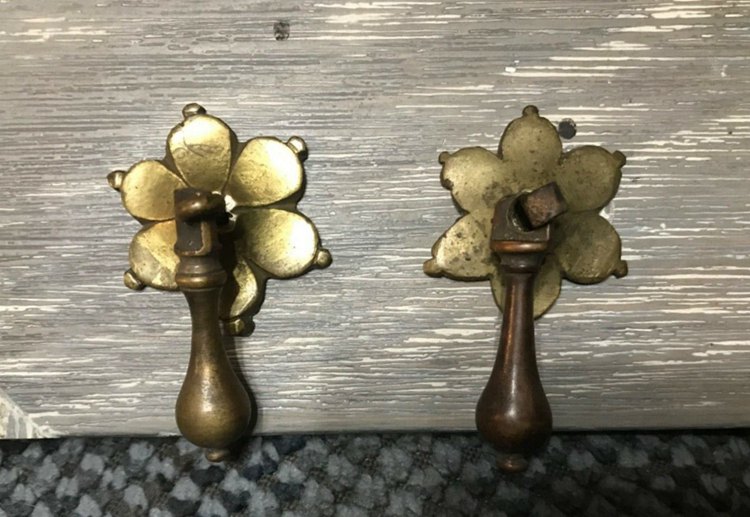
Also known as the William and Mary era, the late 17th century was characterized by the prevalence of “drop” pulls for drawers. These pulls included a single knob that hung from a flat metal plate.
Because it was made out of the sand, the texture on the reverse of the plate is not consistent at all. It’s possible that the surface has some ridges and bumps on it. This wood furniture could help in identifying antique furniture.
Early 18th Stages
In the early eighteenth century, drawer pulls began to take on the bail form that is still used today. They hung on two pins that curled inward to complete the handle. This design and same components are still in use today.
The pull had a flat plate made of brass as its backing, and it was affixed to the piece of furniture using nails or primitive bolts and nuts. The sand casting complex process resulted in the back of the plate having an uneven texture, and the hue of the brass was more yellow than red.
Late 18th Century
Despite the fact that the bail form persisted far into the late 18th century, the production method underwent significant changes. Because it included a higher percentage of copper, the brass came out looking more reddish.
Additionally, brass became accessible in sheet form, which led to the development of smooth back plates rather than the lumpy sand cast versions that were previously used.
19th century
Some antique dresser hardware and drawer pulls from the nineteenth century were manufactured by hand, and the vast majority had ink stamps. Pulls that are manufactured by machines have consistent visual quality, and they may even come with a patent stamp that indicates the year the pull was first manufactured.
Items of Furnishings Lacking the Stamp
It is unfortunate, but not all antique pieces of furniture will have antique furniture makers marks on them. The difficulty of verifying the age of an item like this, even if it is an antique, is something that must be avoided.
The following are some of the things you should check:
- Numbers or various forms of identification and makers marks, such as serial numbers
- Indications that the piece of furniture in question has organically weathered over time
- The building of the furnishings
- The variety of wood and the quality of it
- Whether or if the furniture is appropriate for the particular time period and location
- Whether the runners on the drawers seem worn
- A piece seems even and smoothes all around, with excellent joints
- Wear and tear, scuffs, scratches, and maybe evidence of water damage can be seen on this item
How Much Is Antique Furniture Worth
Although the majority of auction websites do not provide services to value antiques, they do present a significant amount of information to visitors. If you want to find out how much your furniture could be worth, you should go through both active and sold ads.
The following online destinations often host auctions for antique furniture or offer antiques themselves, including:
eBay
This online auction and shopping platform feature a large selection of furniture available for local pickup. To locate things that have recently been purchased using the online auction platform, do an advanced search and then select the “sold listings” button. They also show labels of old furniture makers.
Ruby Lane
Browse the current listings that are being offered by vendors to get an idea of the prices that others would be ready to pay for items that are comparable.
Go Antiques
You may locate a piece of furniture that is comparable to the one you have by browsing the thousands of pieces that are available on the well-established antique marketplace known as Go Antiques.
TIAS
TIAS offers a wide collection of things and maybe a fantastic method to determine the value of comparable furniture. Despite the fact that the interface on this site can be a little bit tough at times, it is worth checking out.
You may utilize labels printed antique pricing guides to assist you to gain an estimate of your piece’s worth. There are several well-liked alternatives, the vast majority of which may be purchased in your neighborhood bookshop or via an online book retailer.
- Antique Trader Furniture Price Guide
- British Antique Furniture: Price Guide and Reasons for Values
- Miller’s Antiques Handbook & Price Guide 2020-2021
- Kovels’ Antiques & Collectibles Price Guide 2022
- Warman’s Antiques & Collectibles 2012 Price Guide
Where to Shop For Antique Furniture?
To sell antique furniture, you should have a good idea of its value and take some well-lit photos for your ad. Be sure to also include photos of any appraisals or historical documents for your piece to prove its authenticity.
The following platforms are best to buy or sell antique furniture in 2022:
- Online auction houses
- Craigslist
- eBay
- Etsy
- 1stdibs
- Sothebys, etc
Take Away
When it comes to passionate antique collectors, antique furniture makers marks left behind by the furniture builders might be as valuable as gold dust.
French polished technique is often used on older, more valuable pieces. The presence of a lacquer or varnish finish is unmistakable evidence of later manufacturing date. It may not always be feasible to test a finish in a dealer’s showroom, but if you are able to do so, you should identify the finish in question before making a purchase.
If denatured alcohol dissolves the finish, it’s shellac. Older items may have milk paint that can only be removed with ammonia. Using equal amounts denatured alcohol, white vinegar, and kerosene, clean waxy or dusty furniture.

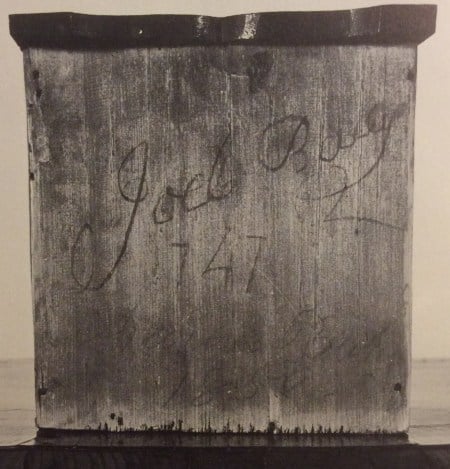
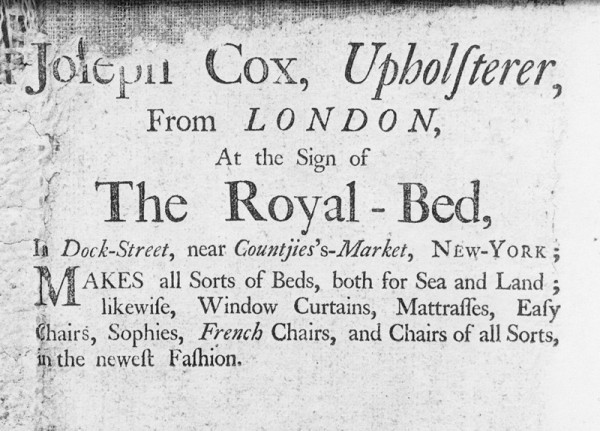
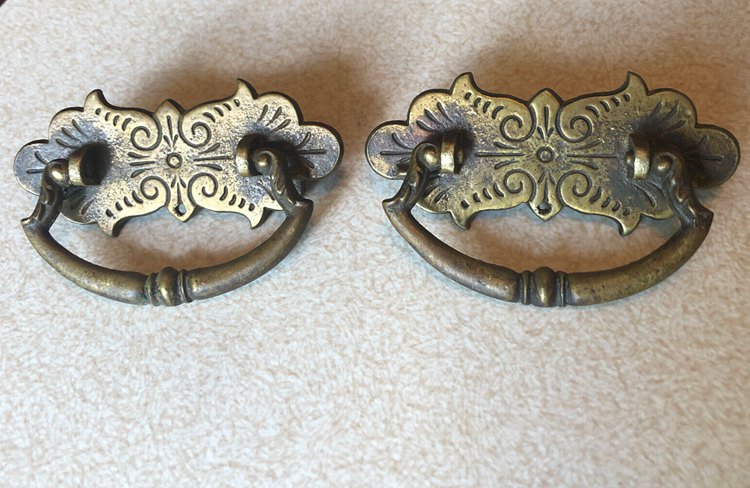




![Where To Sell Antique Furniture In 2022 [Ultimate Guide]](https://www.jacquelinestallone.com/wp-content/uploads/2022/09/Etsy-Your-Place-To-Buy-And-Sell-All-Things-Handmade-600x450.jpg)


